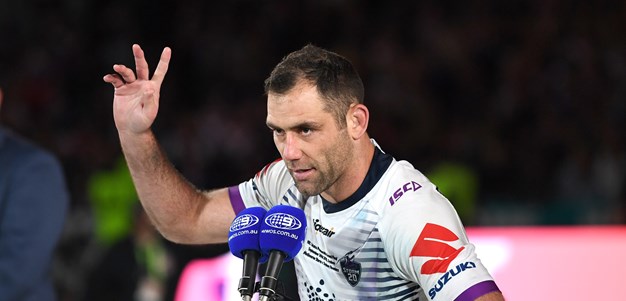A meeting of NRL coaches next week is expected to back the introduction of up to three annual player transfer windows.
The NRL announced after last Wednesday's CEOs meeting that it was looking at official trade periods for the 2020 season and the concept received support from Penrith coach Ivan Cleary and North Queensland's Paul Green when discussed by the competition committee later in the week.
Other leading coaches, including Wayne Bennett, have previously endorsed a player transfer window and South Sydney – the club he will have charge of from 2020, if not next season – are keen advocates of introducing official trade periods, along with Melbourne Storm.
The introduction of transfer windows would replace the current system allowing players to negotiate with rival clubs from November 1 the year before their contracts expire but those players may still be able to test the market during one of the trade periods.
This would apply to players such as Warriors playmaker Shaun Johnson, Wests Tigers halfback Luke Brooks, Melbourne five-eighth Cameron Munster and Penrith forward James Fisher-Harris if they hadn't finalised a new deal with their clubs before their contracts expire at the end of next season.
While details of how a transfer window would work in the NRL are yet to be finalised, confining player movements to official trade periods would be less disruptive for coaches trying to manage their rosters.
It looks like you may be using adblocking software to view this site.
Many features on the site, such as video playback, may not work properly when using adblocking software.
Please whitelist our domain or disable your adblocker to access all features and videos.
Dufty told spot is safe at Dragons
It could also have the added benefit of placing greater scrutiny on third party deals, while creating a series of events to generate publicity for the game similar to the AFL's trade period or transfer deadline day in the English Premier League.
The difference between the NRL and those competitions is that the AFL also has a draft, while EPL clubs don't have salary cap restrictions.
However, it is understood that the NRL is considering limiting player movement to the following trade periods:
- End of season – this would be the main transfer window and would be likely to take place between grand final day and November 1, the official start date for NRL contracts;
- Mid-season – this would take place during State of Origin, possibly coinciding with the stand-alone representative round when NRL clubs don't play, and;
- Pre-season or early season – this would be either be just before Round 1, possibly the week before as clubs don't play, or after Round 5 or 6.
The Rugby League Players Association previously proposed a transfer window after Round 6 as most coaches have settled on their line-ups by then and players who are not getting a run could seek an opportunity with another club.
Coaches will be asked for their views on the proposed trade periods when they gather for an end-of-season meeting on November 29 and most are expected to be supportive of the concept.
Among their concerns is likely to be the policing of an official transfer window as managers and clubs are still expected to discuss player movement outside the trade periods.
However, if the NRL only registers contracts with a rival club during the transfer window a player would be taking a risk by negotiating a deal earlier as his potential future club could change their minds should he suffer an injury or a drop off in form.
A player could also renege on any deal negotiated with a rival club outside the trade period if he receives a better offer.
It looks like you may be using adblocking software to view this site.
Many features on the site, such as video playback, may not work properly when using adblocking software.
Please whitelist our domain or disable your adblocker to access all features and videos.
Josh Morris starts life as a Shark
If the proposed transfer system was now in place, David Klemmer would have to wait until next year's pre-season or mid-season trade period to seek permission from Canterbury to negotiate with Newcastle as he is contracted to the Bulldogs until 2020.
However, the likes of Melbourne captain Cameron Smith, South Sydney pair John Sutton and Robert Jennings and Brisbane trio Corey Oates, Tevita Pangai jnr and Matt Lodge would have been free to negotiate with rival clubs during the end of season transfer window as they are yet to finalise contracts for next year.
The introduction of trade windows would put an end to players continuing to play for a club when they have signed elsewhere for the following season as transfers would be immediate.
This would be welcomed by fans as it would reduce complaints about player loyalty, while creating anticipation about the arrival of new recruits to bolster a team's fortunes after the State of Origin period when the Telstra Premiership often hits a mid-year lull.
Clubs wanting to shift players to create room in their salary cap could suggest they take the opportunity to find a better deal elsewhere, while others could ask to test the market during a trade window.
Under the AFL system, clubs have the opportunity to match an offer if a rival club tables a better deal and the NRL has previously expressed a desire to have a central register of contract offers.
This would ensure greater scrutiny of third party agreement as any deal in which a player signed with a club for substantially less than he was offered by another would arouse suspicion.
While the NRL has no plans to scrap third party agreements for players, last week's CEOs meeting was advised that a proposal to publish the total amount of TPAs for each club was likely to go ahead in a bid to increase transparency.





